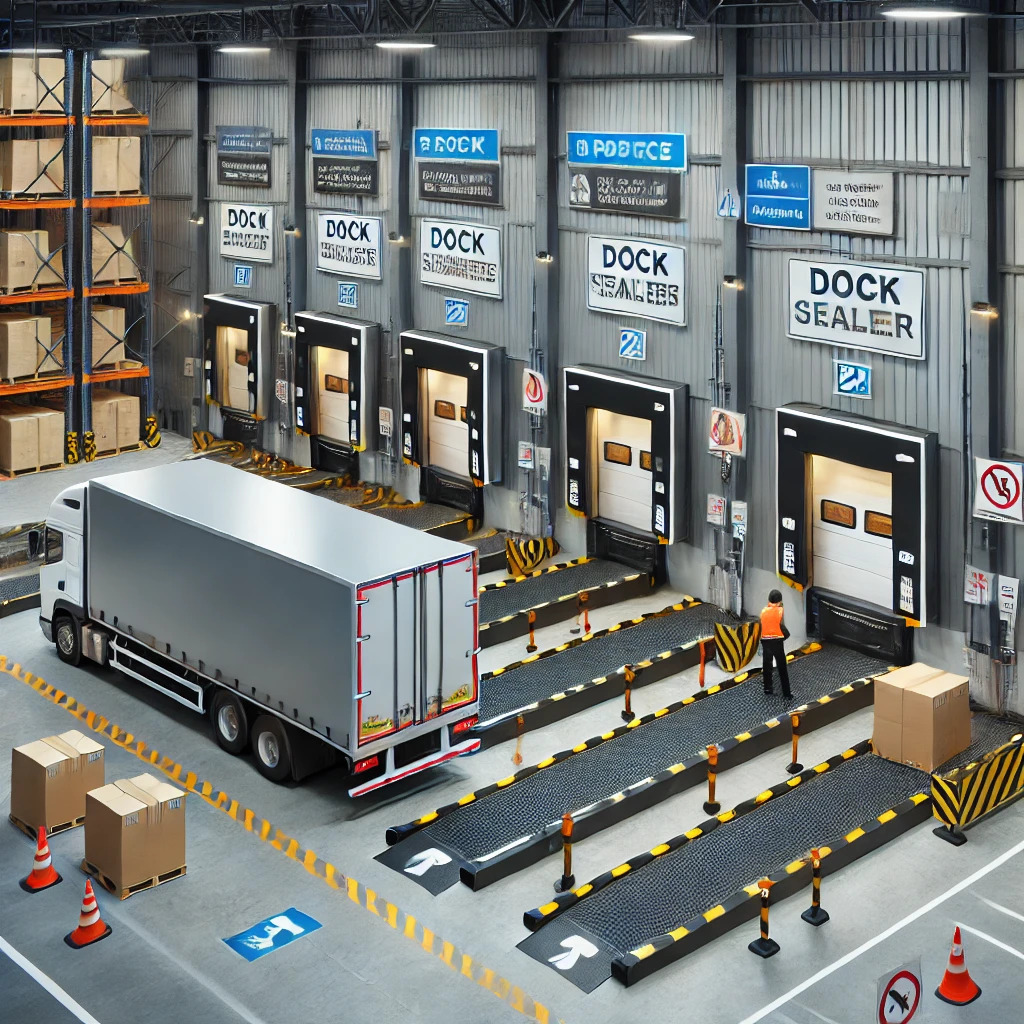
Introduction
Efficient loading and unloading operations are crucial for any warehouse or distribution center. The right dock equipment can make a significant difference in safety, speed, and overall productivity. In this comprehensive guide, we will explore the various types of essential dock equipment that are necessary for a well-functioning dock area. From dock levelers to safety barriers, each piece of equipment plays a vital role in the seamless operation of your facility.
Types of Dock Equipment
Dock Levelers
Dock levelers are essential for bridging the gap between a dock and a truck. They ensure smooth transitions, enhancing safety and efficiency. There are three main types:
- Mechanical Dock Levelers: Operated manually, these are cost-effective but require more physical effort.
- Hydraulic Dock Levelers: Easy to use and operate with a push-button, offering higher efficiency and safety.
- Air-Powered Dock Levelers: Utilizing airbags to lift and lower, these are highly reliable and require minimal maintenance.
Dock Seals and Shelters
Dock seals and shelters create a tight seal between the dock door and the trailer, preventing energy loss and protecting goods from external elements.
- Dock Seals: Made of foam pads that compress when the trailer backs in.
- Dock Shelters: Provide a canopy-like cover around the dock door, suitable for various trailer sizes.
Dock Bumpers
Dock bumpers protect the dock and the vehicle from damage during loading and unloading. They absorb the impact of the trailer, preventing structural damage.
Vehicle Restraints
Vehicle restraints secure the trailer to the dock, preventing movement during loading and unloading. This enhances safety by reducing the risk of accidents.
Dock Lights
Proper illumination is essential for safety and efficiency. Dock lights provide adequate lighting inside the trailer, ensuring clear visibility for workers.
Loading Dock Doors
High-quality dock doors are crucial for security and energy efficiency. There are several types to consider:
- Sectional Dock Doors: Consist of panel sections that lift overhead.
- Roll-Up Dock Doors: Roll up into a coil, saving space.
- High-Speed Dock Doors: Operate quickly, suitable for high-traffic areas.
Dock Plates and Boards
Dock plates and boards bridge the gap between the dock and the trailer. They are portable and suitable for light to medium-duty applications.
Edge of Dock Levelers
Edge of dock levelers are a cost-effective alternative to full-size dock levelers, ideal for operations with less variation in trailer height.
Wheel Chocks
Wheel chocks prevent trucks from moving during loading and unloading, enhancing safety. They are typically used alongside vehicle restraints.
Dock Safety Barriers
Safety barriers prevent accidents by blocking the edges of the dock when not in use. They are crucial for preventing falls and ensuring worker safety.
Dock Ramps
Dock ramps facilitate the movement of goods between different levels, essential for loading and unloading trucks without built-in dock levelers.
Hand Trucks and Dollies
Hand trucks and dollies are necessary for moving goods within the dock area, improving efficiency and reducing physical strain on workers.
Pallet Jacks
Pallet jacks are used for lifting and moving pallets. They come in manual and electric versions, suitable for various load capacities.
Forklifts
Forklifts are indispensable for moving heavy loads. They come in various types, including electric, diesel, and LPG-powered, each suitable for different applications.
Scissor Lifts
Scissor lifts provide vertical lifting, essential for accessing high storage areas and conducting maintenance work at heights.
Conveyor Systems
Conveyor systems automate the movement of goods, enhancing efficiency and reducing manual labor. They can be customized to fit specific operational needs.
Loading Dock Accessories
Additional accessories such as trailer stands, dock lights, and fans improve the overall functionality and safety of the dock area.
Dock Automation Systems
Automation systems streamline dock operations, reducing manual intervention and increasing efficiency. They include automated dock doors, vehicle restraints, and levelers.
Safety Signage and Floor Markings
Clear signage and floor markings enhance safety by guiding workers and vehicles within the dock area, preventing accidents and ensuring smooth operations.
Maintenance of Dock Equipment
Regular maintenance of dock equipment ensures longevity and optimal performance. It includes routine inspections, cleaning, and timely repairs.
Choosing the Right Dock Equipment
Selecting the right dock equipment depends on various factors such as the type of goods, frequency of operations, and specific requirements of the facility. Assessing these factors ensures the right investment in equipment that enhances productivity and safety.
Frequently Asked Questions About Dock Equipment
Q. What is the purpose of dock levelers?
A. Dock levelers bridge the height gap between the dock and the truck, ensuring smooth and safe transitions during loading and unloading.
Q. Why are vehicle restraints important?
A. Vehicle restraints secure the trailer to the dock, preventing it from moving during operations and enhancing safety.
Q. What are dock seals and shelters used for?
A. Dock seals and shelters create a tight seal between the dock and the trailer, protecting goods from external elements and preventing energy loss.
Q. How do dock bumpers work?
A. Dock bumpers absorb the impact of the trailer during docking, protecting both the dock and the vehicle from damage.
Q. What types of dock doors are available?
A. Common types of dock doors include sectional, roll-up, and high-speed doors, each offering different benefits in terms of space saving, speed, and security.
Q. Why is dock lighting important?
A. Proper dock lighting ensures clear visibility inside trailers and dock areas, enhancing safety and efficiency during loading and unloading operations.
Conclusion
Investing in the right dock equipment is essential for ensuring efficient, safe, and productive loading and unloading operations. By understanding the various types of dock equipment available and their specific uses, facility managers can make informed decisions that enhance their overall operations. Regular maintenance and proper usage of dock equipment further contribute to a well-functioning dock area, ultimately supporting the success of the entire supply chain.
